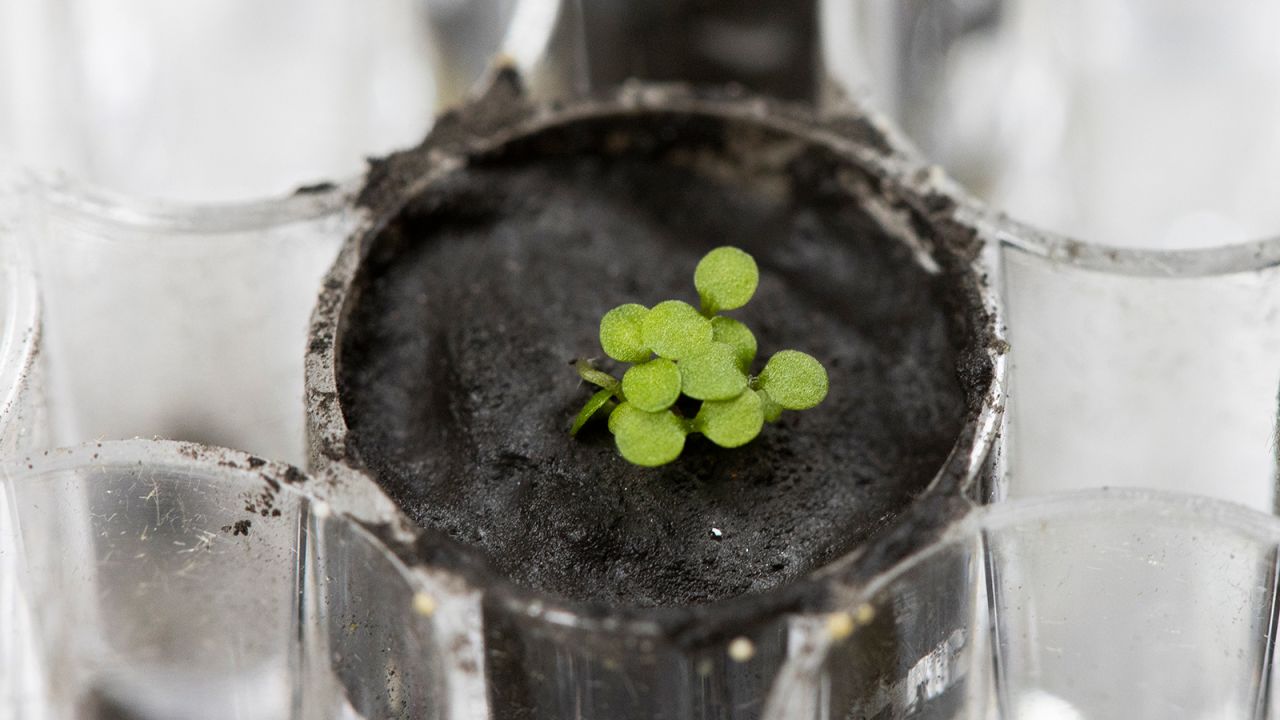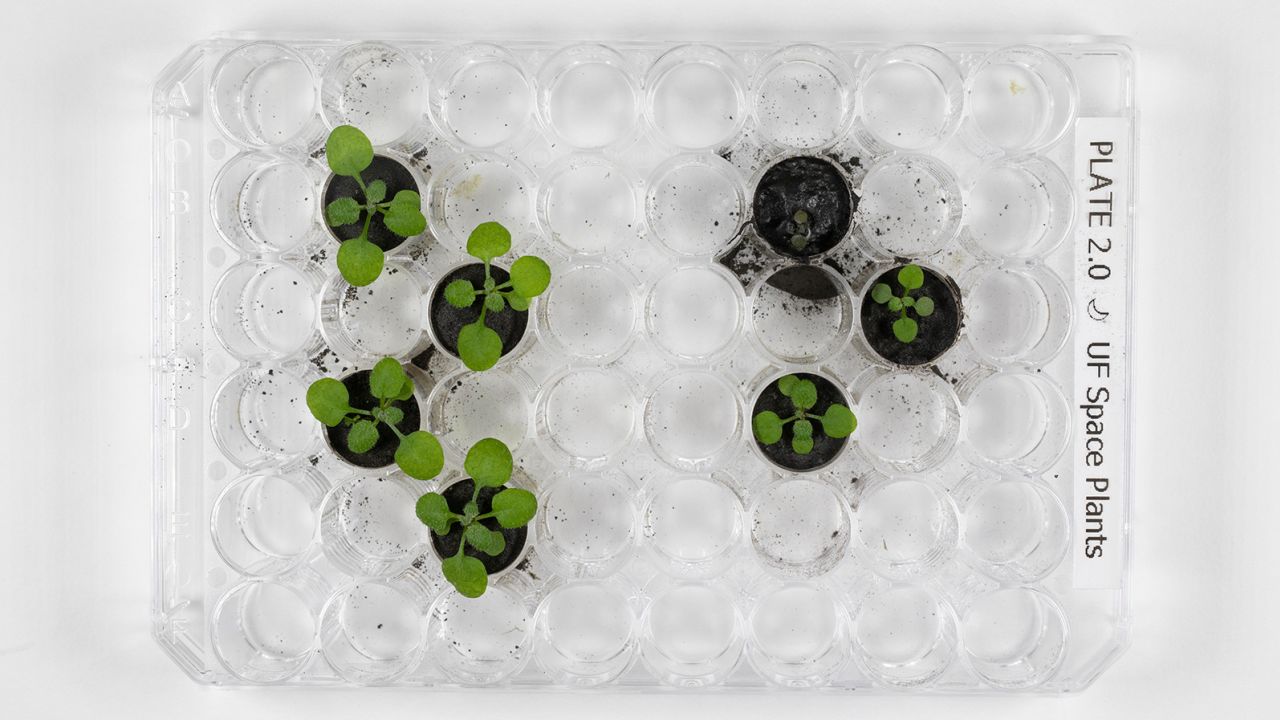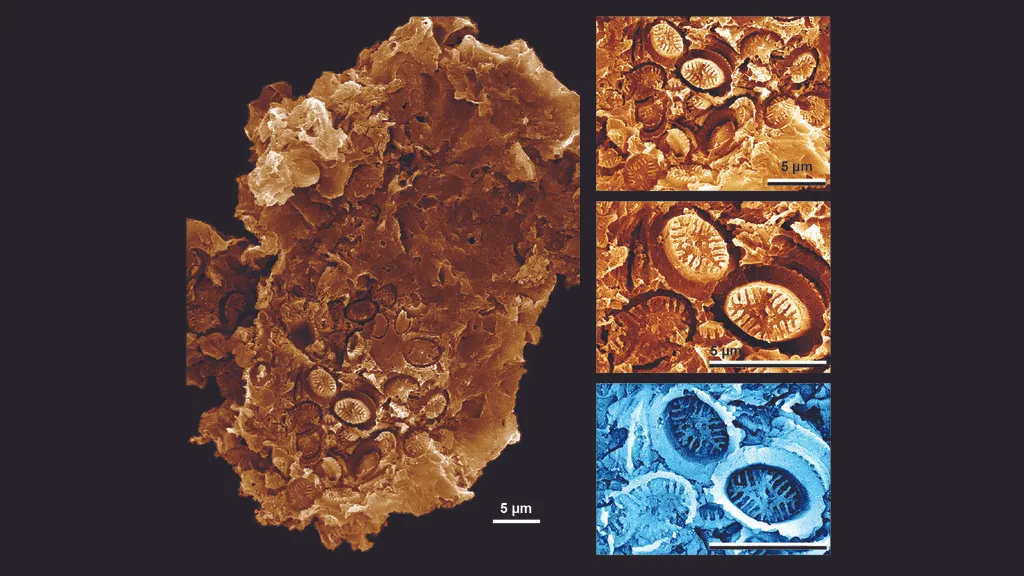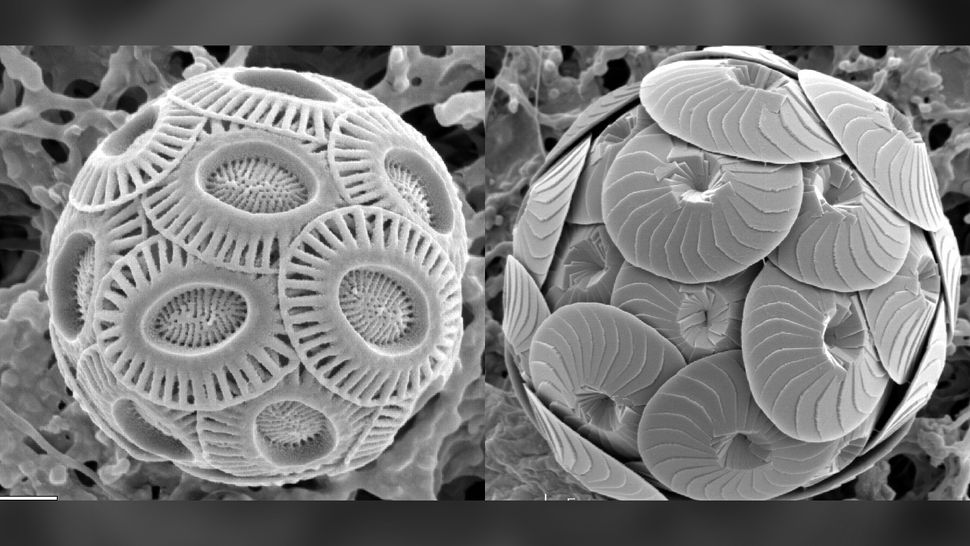The Zen of Technology & Scientific Discovery! (& Robots)
Collapse
X
-
Fascinating update on what may have killed the world's first pig heart human recipient. Let us dedicated our practice to this pioneer, his doctors and, of course, the pigs ...
Gassho, JA pig virus may have contributed to the death of a man who received a groundbreaking transplant using a pig heart, according to news reports.
The man, 57-year-old David Bennett Sr., died on March 8, two months after his pig-heart transplant surgery. The heart used in the transplant was from a pig that had been genetically modified to make its heart more acceptable to a human immune system.
Now, Dr. Bartley Griffith, director of the Cardiac Transplant Program at University of Maryland Medical Center who performed the transplant, has revealed that DNA from porcine cytomegalovirus, a virus that infects pigs, was detected in the patient prior to his death, according to MIT Technology Review.
"We are beginning to learn why he passed on," Griffith said in a webinar on April 20 discussing the transplant, MIT Technology Review reported. The virus "maybe was the actor, or could be the actor, that set this whole thing off."
Doctors screened the pig's heart for this virus several times. But such tests only pick up active infections, not latent infections in which the virus "hides" in the body without actively replicating, according to The New York Times.
But 20 days after the transplant, blood tests picked up low levels of porcine cytomegalovirus DNA in Bennett's body, the Times reported. At first, doctors thought this could be a lab error. By 40 days after the transplant, however, Bennett became very sick and tests showed a sharp rise in the viral DNA levels in his blood, the Times reported.
Porcine cytomegalovirus is specific to pigs and is not believed to be able to infect human cells. However, the virus might have suddenly replicated out of control in the pig's heart, without the animals' immune system to suppress the virus. This may have set off an inflammatory response in the patient, MIT Technology Review reported.
"Did this contribute to the patient's demise? The answer is obviously, we don't know, but it might have contributed to his overall not doing well," Dr. Jay Fishman, associate director of the transplantation center at Massachusetts General Hospital, who was not involved with Bennett's transplant, told the Times.
More sensitive screening tests of animals will be needed to prevent the transfer of such viruses in future animal-to-human transplantations, the Times reported.
https://www.livescience.com/pig-viru...ansplant-death
STLahALL OF LIFE IS OUR TEMPLEComment
-
Earth is being ATTACKED by massive meteor storms and solar blobs!
Visible from Australia to (I believe) Canada and much of Europe, you can calculate where and when in your location with this:How to watch the Eta Aquarids meteor shower this weekend
One of spring's busiest meteor showers, called the Eta Aquarids, is peaking this weekend. To catch the "shooting stars," just step outside and look to the southern night sky.
The Eta Aquarids reached their approximate peak Friday morning (May 6), and they will continue to put on a strong showing in the coming days, reaching as many as 30 meteors an hour. And these meteors are known for their speed, reaching some 148,000 mph (just over 238,000 km/h) as they hit our atmosphere, NASA said.
The shooting stars originate from Halley's Comet (1P/Halley), a short-period comet that swings through the inner solar system every 75 to 76 years and will next come by in about 2061. During these visits, the comet leaves behind its own calling card — a debris trail of dust grains that Earth plows through every May. The bits of debris that hit our atmosphere will burn up harmlessly before reaching the ground.
This meteor shower is best visible from the Southern Hemisphere or close to the equator, but you can still catch a glimpse of the meteors in the Northern Hemisphere, said Bill Cooke, who leads NASA's Meteoroid Environment Office at the agency's Marshall Space Flight Center in Alabama.
... For the best meteor viewing, go outside around 3 a.m. local time after the moon has set. While the meteors originate in the constellation Aquarius near the celestial equator, it's better to look at the sky's zenith (straight up) so that you can see as many meteors as possible.
Pick a safe location and bring a lawn chair to reduce neck strain. Move away from as many lights as possible and try to get outside at least 20 minutes before you want to go meteor-hunting, to let your eyes adjust to the dark
https://www.livescience.com/how-to-w...s-this-weekend
Gassho, JGiant blob of solar plasma could 'graze' Earth this weekend, NOAA says
If the solar storm hits Earth, it could drive the aurora much further south than usual. ...
A weak solar storm could brush past Earth on Saturday (May 7), potentially leading to minor radio blackouts, the National Oceanic and Atmospheric Administration (NOAA) reported in a new space weather forecast.
Continuing a months-long spate of heightened activity, the sun is currently crackling with powerful solar flares, which are often accompanied by giant explosions of plasma known as coronal mass ejections (CMEs). When CMEs pass over Earth, they can temporarily compress our planet's magnetic shield, resulting in geomagnetic storms that can knock out power grids, muddle radio waves and damage satellites in their path.
The vast majority of geomagnetic storms are mild, according to NOAA. But the largest CMEs can trigger much more devastating storms — such as the infamous 1859 Carrington Event, which induced such strong electrical currents that telegraph equipment burst into flame, according to NASA. Some scientists have warned that another solar storm of that magnitude could plunge Earth into an "internet apocalypse," knocking nations offline for weeks or months, Live Science previously reported.
There is a small chance that a small CME could "graze Earth's magnetosphere" on Saturday, NOAA said in their latest report, resulting in a G1-class geomagnetic storm — the weakest class of storm on NOAA's five-level scale. When a G1 storm hits, weak power grid fluctuations can occur, and the aurora — a phenomenon caused by charged particles in solar wind colliding with molecules in Earth's atmosphere — can be seen at lower latitudes than usual. CMEs typically take 15 to 18 hours to reach Earth after they leave the sun.
STLahALL OF LIFE IS OUR TEMPLEComment
-
Just cool!
Listen to eerie sounds from echoing black holes
Millions of elusive black holes hide in plain sight across the Milky Way galaxy, only giving away their presence occasionally through bursts of X-ray light when they feed on stars.
Astronomers have been able to pin down the locations of eight rare pairings of black holes and the stars orbiting them, thanks to the X-ray echoes they release. Previously, there were only two known pairs emitting X-ray echoes in our galaxy.
Black hole binaries occur when these celestial phenomena are orbited by a star, which they sometimes use to siphon gas and dust as a snack.
The echoes have been converted into sound waves that just may keep you awake at night.
... The echoes of these X-ray emissions can help astronomers map where black holes are located. It’s not unlike echolocation used by bats for navigation. Bats release calls that bounce off obstacles and return as an echo, and the length of the echo’s return helps bats determine the distance of objects. ...
The black hole echoes aren’t actual sounds we can hear without some help, so Kara collaborated with Kyle Keane, lecturer in MIT’s department of materials science and engineering, and Ian Condry, professor in MIT’s department of anthropology, to turn them into sound waves.
The team tracked changes in the X-ray echoes, determined time lags during transition stages and traced commonalities in the evolution of each black hole outburst.
The result sounds like something from a 1950s sci-fi film.
“We’re at the beginnings of being able to use these light echoes to reconstruct the environments closest to the black hole,” Kara said. “Now we’ve shown these echoes are commonly observed, and we’re able to probe connections between a black hole’s disk, jet, and corona in a new way.”
Gas Giant Gassho, J
STlahALL OF LIFE IS OUR TEMPLEComment
-
I'm no astronomer, but maybe it's like the drain in the galactic bathtub?
In any case, the galaxy would not be here without it, so we would not be here without it. If we are made of stardust, perhaps the black hole is where our own atoms will someday return ...
1st image of supermassive black hole at the center of [our] Milky Way galaxy revealed
For the first time, astronomers have captured an image of the supermassive black hole at the center of our galaxy.
It’s the first direct observation confirming the presence of the black hole, known as Sagittarius A*, as the beating heart of the Milky Way.
Black holes don’t emit light, but the image shows the shadow of the black hole surrounded by a bright ring, which is light bent by the gravity of the black hole. Astronomers said the black hole is 4 million times more massive than our sun.
“For decades, astronomers have wondered what lies at the heart of our galaxy, pulling stars into tight orbits through its immense gravity,” Michael Johnson, astrophysicist at the Center for Astrophysics | Harvard & Smithsonian, said in a statement.
“With the (Event Horizon Telescope or EHT) image, we have zoomed in a thousand times closer than these orbits, where the gravity grows a million times stronger. At this close range, the black hole accelerates matter to close to the speed of light and bends the paths of photons in the warped (space-time).”
The black hole is about 27,000 light-years away from Earth. Our solar system is located in one of the spiral arms of the Milky Way galaxy, which is why we’re so distant from the galactic center. ... “We were stunned by how well the size of the ring agreed with predictions from Einstein’s Theory of General Relativity,” said EHT project scientist Geoffrey Bower from the Institute of Astronomy and Astrophysics, Academia Sinica, Taipei, in a statement.
... The discovery was made possible by more than 300 researchers from 80 institutions working with a network of eight different radio telescopes around the globe that make up the Event Horizon Telescope.
... It’s the second image ever captured of a black hole, with the first being the EHT’s achievement of imaging M87* at the heart of the distant Messier 87 galaxy, located 55 million light-years away, in 2019.
https://us.cnn.com/2022/05/12/world/...scn/index.html
These panels show the first two black hole images. On the left is M87*, and the right is Sagittarius A*.

Gassho, J
STLahLast edited by Jundo; 05-13-2022, 11:31 PM.ALL OF LIFE IS OUR TEMPLEComment
-
Soon, we'll have salads on the moon!
Plants have been grown in lunar soil for the 1st time ever
In a landmark first, scientists have grown plants in lunar soil using samples collected during the Apollo missions to the moon. This is the first time plants have been sprouted and grown on Earth in soil from another celestial body. ... But the experiments also reveal just how stressful it is for plants to grow in lunar regolith, or soil, which is wildly different from natural habitats on Earth.
... “For future, longer space missions, we may use the Moon as a hub or launching pad,” Ferl said in a statement. “So, what happens when you grow plants in lunar soil, something that is totally outside of a plant’s evolutionary experience? What would plants do in a lunar greenhouse? Could we have lunar farmers?” ...
... The scientists filled each well with a gram of lunar soil, added nutrients and water, and poked in a few seeds of Arabidopsis thaliana, or thale cress, a small flowering plant native to Eurasia and Africa. Thale cress is an attractive plant specimen to researchers because it is well studied and its genetic code has been mapped – which allowed the researchers to study how the alien soil affected the plant’s gene expression. ...
The Arabidopsis sprouts, however, showed signs of struggle as they adjusted to the lunar soil.
The seedlings were smaller, grew slower and varied in size compared with plants grown in Earth soils. The roots were stunted. And the plants took longer to grow expanded leaves than the Arabidopsis plants grown in volcanic ash. Some of the lunar soil plants showed reddish black pigments in their leaves, an outward sign of stress.
On a genetic level, three of the smaller, darker plants expressed more than 1,000 genes that were largely related to stress.
“At the genetic level, the plants were pulling out the tools typically used to cope with stressors, such as salt and metals or oxidative stress, so we can infer that the plants perceive the lunar soil environment as stressful,” Paul said.
“Ultimately, we would like to use the gene expression data to help address how we can ameliorate the stress responses to the level where plants – particularly crops – are able to grow in lunar soil with very little impact to their health.” ...
https://us.cnn.com/2022/05/12/world/...scn/index.html

By day 16, there were clear physical differences between plants grown in the volcanic ash (left) compared with those grown in the lunar soil (right).
(And even cress get stress! Maybe the Zucchini should try Zazen?
Gassho, J
STLahLast edited by Jundo; 05-13-2022, 11:56 PM.ALL OF LIFE IS OUR TEMPLEComment
-
Not only part of the immune system, but seemingly with a possible role in "sculpting" the developing human body ...
The human body, and maybe the whole world, truly a team effort of so many needed players ...Scientists finally have proof of mysterious immune cell in humans
These mysterious cells emerge in the womb.
While working to map every cell in the human body, scientists uncovered an elusive type of immune cell that first emerges in the womb. The existence of such cells in humans has been hotly debated — until now.
These mysterious cells, known as B-1 cells, were first discovered in mice in the 1980s, according to a 2018 review in The Journal of Immunology. These cells arise early in mouse development, in the womb, and they produce various antibodies when activated. Some of these antibodies latch onto the mouse's own cells and help to clear dying and dead cells from the body. Activated B-1 cells also make antibodies that act as a first line of defense against pathogens, like viruses and bacteria.
After the discovery of B-1 cells in mice, a research group reported in 2011 that they'd found equivalent cells in humans, but these results were not accepted as conclusive proof. ... Now, a new study, published Thursday (May 12) in the journal Science, provides solid evidence that B-1 cells emerge in early human development, within the first and second trimester.
... What purpose might these special cells serve in a developing human? They may help to sculpt new tissues as they form, Teichmann said.
"When you think about fetal development, in general, there's a massive remodeling of tissues happening all the time," Baumgarth said. For example, humans initially develop webbing between their fingers, but this webbing gets trimmed back before birth. It may be that B-1 cells help direct such tissue trimming during development, but "that's speculation, on my part," she said.
In addition to sculpting tissues, the B-1 cells may provide some level of immune protection against pathogens small enough to cross the placental barrier, Baumgarth said. Again, this is speculation, she said.
The new study expands our understanding of how B-1 cells initially develop and could lay the groundwork for future studies into how the cells function later in life, Rothstein said.
https://www.livescience.com/newfound...l-immune-cells
Gassho, J
STLahALL OF LIFE IS OUR TEMPLEComment
-
They are having some pesky technical problems with the 45 year old Voyager 1 space probe (hey, when ya hit that age, we all get our little aches and pains) ... but the article contained some amazing facts ...
Gassho, JThe Voyager 1 probe is still exploring interstellar space 45 years after launching ... Voyager 1 continues to operate well, despite its advanced age and 14.5 billion-mile distance (23.3 billion kilometers) from Earth. And it can receive and execute commands sent from NASA, as well as gather and send back science data.
... Due to Voyager’s interstellar location, it takes light 20 hours and 33 minutes to travel one way, so the call and response of one message between NASA and Voyager takes two days. ...
... Voyager 2, a twin spacecraft, continues to operate well in interstellar space 12.1 billion miles (19.5 billion kilometers) from Earth. By comparison, Neptune, the farthest planet from Earth, is, at most, only 2.9 billion miles away. Both probes were launched in 1977 and have far exceeded their original purpose to fly by planets.
Now, they have become the only two spacecraft to gather data from interstellar space and provide insights about the heliosphere, or the bubble created by the sun that extends beyond the planets in our solar system.https://us.cnn.com/2022/05/18/world/...scn/index.html
STLahALL OF LIFE IS OUR TEMPLEComment
-
More than just a ball of fire ...
Solar Orbiter reveals a never-before-seen look at our sun
The Solar Orbiter mission’s first close pass of the sun in March has revealed our star in a new light.
The spacecraft, which flew by the sun on March 26, has returned a treasure trove of new images and insights after coming within one-third the distance from the sun to the Earth. Solar Orbiter’s heat shield reached about 932 degrees Fahrenheit (500 degrees Celsius), but functioned as expected and protected the spacecraft during its historic first flyby.
Solar Orbiter comes equipped with a multilayer heat shield, a special coating called “Solar Black” made using burnt bone and sliding doors that protect its instruments. The spacecraft also has solar arrays that can tilt away from the worst of the heat and cooling elements in its interior. Together, these keep the spacecraft from melting as it studies the sun.
The mission, a joint effort between NASA and the European Space Agency, captured views of powerful flares and coronal mass ejections and perspectives of the unexplored solar poles. The orbiter even spied a new feature nicknamed the “hedgehog, a feature [the feature in the bottom third of the following image] that stretches for 15,534 miles (25,000 kilometers) on the sun and has spikes of hot and cold gas. Currently, there is no explanation of what it is or how it formed in the sun’s atmosphere.

It’s important to understand the solar cycle because space weather caused by the sun – eruptions like solar flares and coronal mass ejection events – can impact the power grid, satellites, GPS, airlines, rockets and astronauts in space.
Every 11 years, the sun completes a solar cycle of calm and stormy activity and begins a new one. The current solar cycle, Solar Cycle 25, officially began in December 2019, and the next solar maximum, when the sun is experiencing peak activity, is predicted to occur in July 2025.
Over the course of a solar cycle, the sun transitions from a calm period to one that is very intense and active. This activity is tracked by counting sunspots and how many are visible over time. Sunspots, or dark spots on the sun, are the origin point for the explosive flares and ejection events that release light, solar material and energy into space.
This puts Solar Orbiter, and another mission called Parker Solar Probe, in perfect position to watch as we head toward solar maximum.
... Solar Orbiter also captured a movie of an active area on the sun where the magnetic field releases loops that rise int the atmosphere. Gas moves around the loops, cools and creates “coronal rain” on the sun’s surface. The science team also saw “coronal moss,” where bright gas creates lacy patterns on the sun.
... The Solar Orbiter mission is designed to study the sun’s outer atmosphere, called the corona, and determine how the sun interacts with the heliosphere, a bubble full of charged particles released by the sun that extends beyond the planets in our solar system. Space weather is created when the sun releases its stream of charged particles, called the solar wind, as well as activity by the solar magnetic fields.The corona can reach a million degrees Celsius (1.8 million degrees Fahrenheit), while the surface is 5,000 degrees Celsius (9,000 degrees Fahrenheit). Solar Orbiter could help determine why the temperature seems to rise away from the sun’s core, rather than drop.
...
Gassho, J
STLahALL OF LIFE IS OUR TEMPLEComment
-
Not living, not dead ...
Hmmm. Having seen my share of SF movies, I wonder if this is really a good idea ...830 million-year-old organisms found locked in ancient crystals could be resurrected
Salt crystals from Central Australia hold ancient microorganisms that became trapped 830 million years ago, new research finds.
And there's a chance that some of the microorganisms might still be alive.
The single-celled organisms are locked in tiny fluid pockets — smaller than the width of a human hair — in halite, or salt, from a formation of sedimentary rocks. The microorganisms lived nearly 1 billion years ago in what was either a shallow, salty marine environment or a shallow, salty lake. ... the status of the life inside them is unknown. However, scientists have previously claimed they resurrected primeval microorganisms found in salt crystals, so it’s possible that the Australian organisms may also still be alive.
... The new study examined halite from Australia's Browne formation ... Inside, the researchers discovered eukaryotes (algae and fungi with distinct cell nuclei) and prokaryotes (bacteria and archaea with no nuclei). ... The organisms are tiny, ranging from half a micron to 5 microns in diameter. (For comparison, a human hair is around 70 microns wide.) ...
Salt-loving microorganisms are survivors, capable of going dormant or otherwise altering their metabolisms to stay alive during times when the water around them dries up, Schreder-Gomes said. In 2000, scientists claimed to have revived a 250-million-year-old bacterium from salt, though they could not definitively prove that their zombie bacteria weren't modern contaminates. Other very old microorganisms have been revived with more certainty, including 101.5 million-year-old bacteria from seafloor sediments. The researchers have not, at this point, breached the crystals to find out if the Australian microorganisms might have a chance at a second life. "If they were able to survive 250 million years, why not a few hundred million years more?" Schreder-Gomes said. "It's certainly a possibility for the future to try to culture them." ...
... The Browne formation rocks formed in a similar environment to the environment that likely existed on ancient Mars, Schreder-Gomes said. The methods the team used to study the organisms could also be used to search for long-gone microorganisms from the Red Planet. The Perseverance Mars rover is caching rocks that will eventually be brought to Earth, and non-destructive techniques will be necessary to understand the context of those rocks' formations ...
https://www.livescience.com/ancient-life-salt-crystals
Gassho, J
STLahALL OF LIFE IS OUR TEMPLEComment
-
Or..we are at the bottom of a well and looking up [emoji120].I'm no astronomer, but maybe it's like the drain in the galactic bathtub? [emoji14]
In any case, the galaxy would not be here without it, so we would not be here without it. If we are made of stardust, perhaps the black hole is where our own atoms will someday return ...

These panels show the first two black hole images. On the left is M87*, and the right is Sagittarius A*.

Gassho, J
STLah
Gassho.
Sat lah
Sent from my Lenovo TB-7305F using TapatalkComment
-
More ancient microbe news ... plankton, actually. These are not the ones from millions of years ago that they are thinking about reviving ...
Well, let's not find out by repeating the catastrophe, if we can avoid it!'Ghost' fossils preserve haunting record of ancient life on a hellish Earth
Ghostly imprints of tiny plankton-like creatures have been found haunting the sediments of prehistoric oceans at a time when such organisms were thought to be extinct. The so-called nannofossil imprints reveal that the organisms survived acidic oceans caused by climate change, and could offer a clue for how modern creatures can endure rising ocean temperatures, researchers said.
Nannofossils are the remains of marine plankton called coccolithophores (cox-oh-LITH'-oh-fours), which belong to the class Prymnesiophyceae and still exist today at the bottom of many ocean food chains. Each of these single-celled, algae-like organisms measures less than 0.001 inch (30 micrometers) wide, and is surrounded by a hard layer of geometric calcium scales, according to the Faculty of Geosciences at the University of Bremen in Germany. And these nannofossils are incredibly abundant.
... However, there are points in the fossil record where coccolithophores appear to suddenly vanish, only to return mysteriously millions of years later. "You get these abrupt changes in the sediment where you go from almost pure white sediments into black sediments," Bown said. These points coincide with ancient ocean warming events, during which seawater became more acidic as it reacted with increased carbon dioxide from the atmosphere. ... Scientists once thought that most species of calcium-coated plankton in these acidic seas were wiped out en masse multiple times and replaced by non-shelled species ... These results suggest that, contrary to previous research, some coccolithophores survived catastrophic ocean acidification and warming die-offs, even as other species went extinct. But the low ocean pH dissolved their shells posthumously, erasing them from the fossil record.
This information could help shed light on our current climate catastrophe, the researchers said, which is already eating away at calcium-rich coral reefs, according to Smithsonian. If the coccolithophores can adapt to warmer, more acidic conditions, it may be good news for modern creatures further up the food chain.
https://www.livescience.com/ghost-na...-acidification

The images show the impressions of a collapsed cell-wall covering (a coccosphere) on the surface of a fragment of ancient organic matter (left) with the individual plates (coccoliths) enlarged to show the exquisite preservation of sub-micron-scale structures (right).

Despite their microscopic size, coccolithophores come in a stunning array of geometric shapes.
Gassho, J
STLahLast edited by Jundo; 05-22-2022, 07:40 AM.ALL OF LIFE IS OUR TEMPLEComment
-
Supernova in the Sahara ...
Gassho, JAlien stone in Egyptian desert came from rare supernova, scientists say
The rock likely came from one of the brightest types of cosmic explosions
A strange extraterrestrial space rock unearthed in the Sahara Desert could be the first evidence on Earth for a rare type of supernova.
The chemical composition of the Hypatia stone, which was first discovered in Egypt in 1996, suggests it may contain dust and gas that once surrounded an enormous type of supernova, the spectacular explosion of a dying star.
Type Ia supernovas typically take place inside dust clouds where a white dwarf, or the shriveled husk of a collapsed star, shares an orbit with a larger, younger star that still has some fuel to burn. The smaller and denser white dwarf uses its immense gravitational pull to snatch some of the younger star’s fuel, which it gorges on relentlessly, stretching the younger star into a teardrop shape. The act of cosmic canniblism eventually ends in mutual destruction, however, as the vampiric white dwarf grows large enough for nuclear reactions to reignite in its core. After a sudden bright flash, an enormous supernova blast hurls the irradiated contents of both stars outwards to mingle and merge with the dust.
In the case of the Hypatia stone, the cocktail of dust and gas likely drifted through space over billions of years until it arrived in our cosmic backyard, eventually solidifying into the larger parent body of the Hypatia stone sometime during the birth of our solar system, the new research suggests. Once formed, likely somewhere in the outer solar system, the rock eventually hurtled to Earth, shattering into fragments as it landed.
"In a sense, we could say, we have caught a supernova Ia explosion in the act, because the gas atoms from the explosion were caught in the surrounding dust cloud, which eventually formed Hypatia's parent body," study lead author Jan Kramers, a geochemist at the University of Johannesburg in South Africa, said in a statement.
To figure out where the rock came from, the researchers performed a chemical analysis of a tiny sample of the Hypatia stone using non-destructive techniques. ... Further tests, which compared the rock’s element concentrations with those we’d expect to see in our region of space, came back with even more surprising results — the stone wasn’t even from our arm of the galaxy ...
https://www.livescience.com/space-ro...pernova-traces
STLahALL OF LIFE IS OUR TEMPLEComment
-
ALL OF LIFE IS OUR TEMPLEComment
-
Loving Kindness came forth as two more chemicals eliminated from my brain which had caused love to be stopped, and kindness to be stunted. Doctors recognized my emotions were difficult until these two chemicals removed from my brain, and mindfulness of loving kindness came forth. For me doctors treat my brain, and mindfulness results, mind in my case involves diseased brain which has a long history of disease, and now once again made free.
Gassho
sat/lahComment





Comment